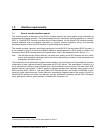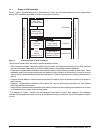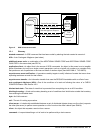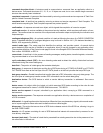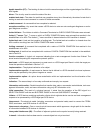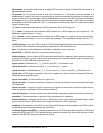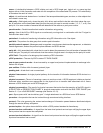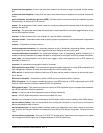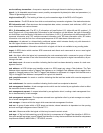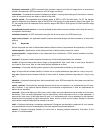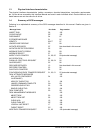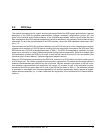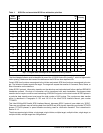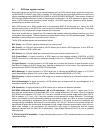
8 Parallel SCSI Interface Product Manual, Rev. A
nexus—A relationship between a SCSI initiator port and a SCSI target port, logical unit, or queue tag that
begins with an initial connection and ends with the completion of the associated I/O process. This relationship
is formed as the result of a task.
object—An architectural abstraction or “container” that encapsulates data types, services, or other objects that
are related in some way.
odd parity—Odd logical parity, where the parity bit is driven and verified to be that value that makes the num-
ber of assertions on the associated data byte plus the parity bit equal to an odd number (1, 3, 5, 7, or 9). See
parity bit. If an even number of asserted bits are detected at the receiver, a parity error occurs.
paced transfer—Parallel transfers that transfer information using pacing.
pacing—Use of the ACK or REQ signal as a continuously running clock in combination with the P1 signal to
indicate when data is valid.
packetized—A method of transferring information using SPI information units. See object.
pad field—The portion of a data group that contains pad information.
parallel protocol request—Messages used to negotiate a synchronous data transfer agreement, a wide data
transfer agreement, and set the protocol options between two SCSI devices.
parity bit—A bit associated with a byte that is used to detect the presence of an odd number of asserted bits
within the byte. The parity bit is driven such that the number of logical ones in the byte plus the parity bit is odd.
pCRC field—The portion of a data group that contains pCRC information.
pCRC protection—The use of pCRC to detect DT DATA PHASE.
peer-to-peer protocol service—A service used by an upper level protocol implementation to exchange infor-
mation with its peer.
peer entities—Entities within the same (protocol) layer.
pending task—A task that is not a current task.
physical interconnect—A single physical pathway for the transfer of information between SCSI devices in a
domain.
physical reconnect—The act of resuming a nexus to continue a task. A SCSI target port initiates a physical
reconnect when conditions are appropriate for the physical bus to transfer data associated with a nexus
between a SCSI initiator port and a SCSI target port.
physical reconnection—The result of a physical reconnect that exists from the assertion of the BSY signal in
a SELECTION or RESELECTION PHASE. A physical reconnection ends with the BUS FREE PHASE (see
Section
3.1.1) or a QAS REQUEST message (see Section 4.3.13).
port—Synonymous with “service delivery port.” A single attachment to a SCSI bus from a SCSI device.
procedure—An operation that can be invoked through an external calling interface.
protocol—The rules governing the content and exchange of information passed between distributed objects
through the service delivery subsystem.
protocol option—An option whose definition within a SCSI protocol standard is discretionary.
protocol service confirmation—A signal from the lower level protocol service layer notifying the upper layer
that a protocol service request has completed.
protocol service indication—A signal from the lower level protocol service layer notifying the upper level that
a protocol transaction has occurred.




